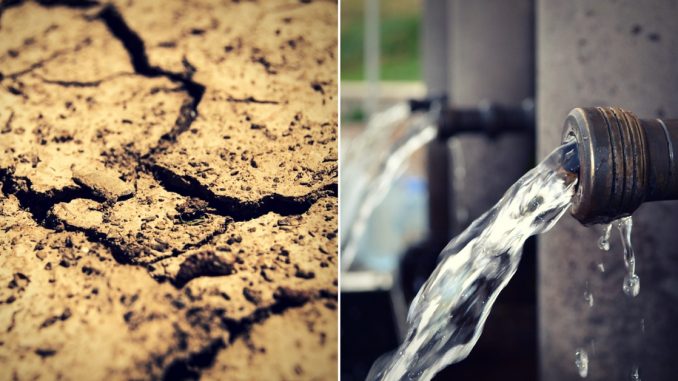
By R. Prasad
Natural recharge during monsoon may not help much if groundwater depletion becomes acute, as rainfall of past years controls current storage
With 230 billion metre cube of groundwater drawn out each year for irrigating agriculture lands in India, many parts of the country are experiencing rapid depletion of groundwater. The total estimated groundwater depletion in India is in the range of 122–199 billion metre cube.
The Indo-Gangetic Plain, northwestern, central and western parts of India account for most intensive groundwater-based irrigation. And among these regions, western India and the Indo-Gangetic Plain have more than 90% of the area irrigated using groundwater.
Significant depletion
Based on Central Ground Water Board (CGWB) data of nearly 5,900 wells which have long-term data (1996–2016), a team of researchers led by Vimal Mishra from the Department of Civil Engineering at IIT Gandhinagar found that a majority of districts in India experienced significant depletion in groundwater storage. The satellite data confirms the well data. The results were published in American Geophysical Union’s journal Earth’s Future.
While districts with significant decrease in groundwater are located in the Indo-Gangetic Plain, northwest, and central (Maharashtra) regions, a few districts in Punjab show substantial decline in groundwater table. With depletion occurring at a rate of 91 cm per year, Punjab has been witnessing a steep decline in groundwater table since 1996. “In northwestern India, the amount of groundwater extracted exceeds the total recharge leading to groundwater depletion,” says Prof. Mishra. In contrast, some districts in western India, east coast and peninsular India have witnessed an increase in groundwater levels.
“If groundwater is depleted and the region experiences drought for two–three years consecutively, there will be serious challenges. Availability of even drinking water will be a huge problem,” says Prof. Mishra. “Natural recharge during monsoon may not help much if groundwater depletion becomes acute, as rainfall of past several years controls the current groundwater storage levels.”
The study published in June this year found that groundwater recharge has declined between 1996 and 2016 in northwest and northcentral India due a reduction in low-intensity rainfall. Low-intensity rainfall during the monsoon is responsible for groundwater recharge in northwest and northcentral India. The study also found that carbon dioxide emission from pumping groundwater and release of carbon dioxide into the atmosphere from the soil when groundwater is depleted is less than 2-7% of the total carbon dioxide emissions in India.
Groundwater management
More than 500 tensiometers to visually monitor soil moisture conditions in rice fields and irrigate the crops only when required were used in five districts in Punjab. Irrigation based on information provided by the tensiometers helped farmers in the five districts save 10–36% groundwater. Using groundwater to irrigate the field only when necessary led to a reduction in electricity consumption and greenhouse emissions.
“The tensiometer gives visual information about the availability of soil moisture conditions. Irrigating the field based on this information will help conserve groundwater,” says Prof. Kamal Vatta from the Columbia International Project Trust, New Delhi and co-author of the paper.
The tensiometer is 2–3 feet long and has a ceramic cup containing numerous tiny pores at the bottom. It is inserted up to 8 inches into the soil, which is beyond the root zone of rice. The water inside the tensiometer reaches equilibrium with soil moisture, and rises or falls depending on the amount of moisture in the soil.
“Farmers are advised not to irrigate the field when the water level in the tensiometer is in the green zone. When the soil gets dry the water level in the tensiometer drops and reaches the yellow zone in the device. Farmers should start irrigating the field at this time and never allow the water in the device to reach the red zone,” Prof. Vatta explains.
According to Prof. Vatta, the instrument is quite accurate in monitoring soil moisture. One device per farm would be sufficient, especially when the terrain is nearly flat. So far, over 22,000 tensiometers, manufactured by Punjab Agriculture University, have been given to rice farmers in Punjab. It costs just Rs.300 per piece.
“Since stopping or reducing the subsidy in electricity prices may not be possible, farmers in the regions where groundwater depletion has already occurred should consider cultivating less water-intensive crops, use better irrigation technologies and irrigate crops only when necessary,” says Prof. Mishra.
Source: The Hindu

Leave a Reply